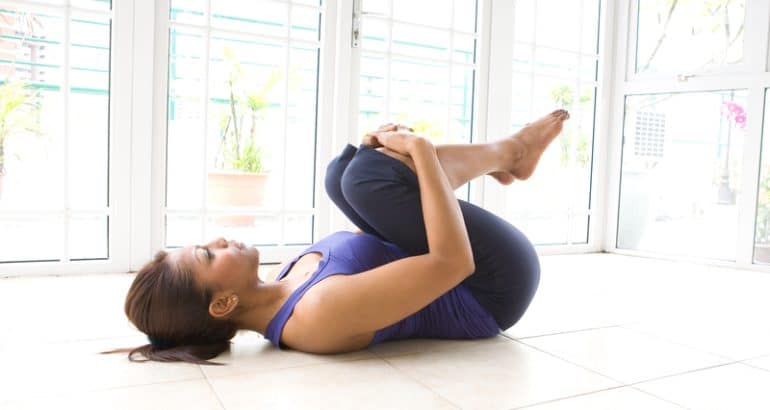Today, we have shared a gentle Yoga Flow for Back Pain and Stiffness designed to ease your tight back muscles and provide you with relief.
Anyone can develop back pain, even children and teens. Back pain is one of the most common reasons people visit a healthcare provider. If you are not treating your body properly, back strains and sprains are almost inevitable. Lifting something heavy or with poor form, a less-than-ideal standing or sitting posture, and even everyday occurrences like coughing, sneezing, or twisting the wrong way can easily injure your back muscles.
If you experience back pain every morning, try to determine if your mattress or sleeping posture could be putting undue pressure on your spine or causing its natural curve to flatten. Sitting in a hunched or slouched position for long periods can also place strain on your spine, causing back pain and stiffness. A sedentary lifestyle is also an often-overlooked cause of back pain. It's time to try this yoga flow for back pain and stiffness. This gentle sequence is designed to help you find relief.
12 Yoga Flow for Back Pain and Stiffness
1. Breaths
For this exercise, use a yoga block, bolster, or pillow to support your pelvis in a forward sitting position.
Begin in an upright sitting position on the pillow with your legs crossed in front of your body, maintaining good alignment with your head, shoulders, and hips. Place your hands on your knees. Close your eyes and take several deep belly breaths, in through your nose and out through your mouth.
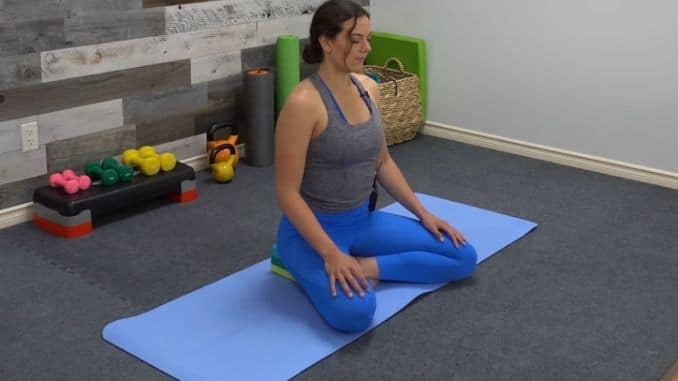
2. Seated Cat-Cow
For this exercise, use a yoga block, bolster, or pillow to support your pelvis in a forward sitting position.
Begin in an upright sitting position on the pillow with your legs crossed in front of your body, maintaining good alignment with your head, shoulders, and hips. Place your hands on your knees. Tighten your abdominal area and inhale as you tilt your head back and arch your mid-back. Then, exhale as you alternate by rounding out your mid-back, slowly dropping your head towards your chest. Repeat the sequence of movements.
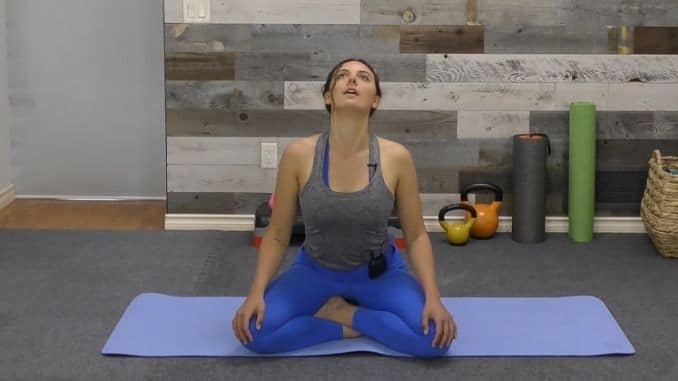 |
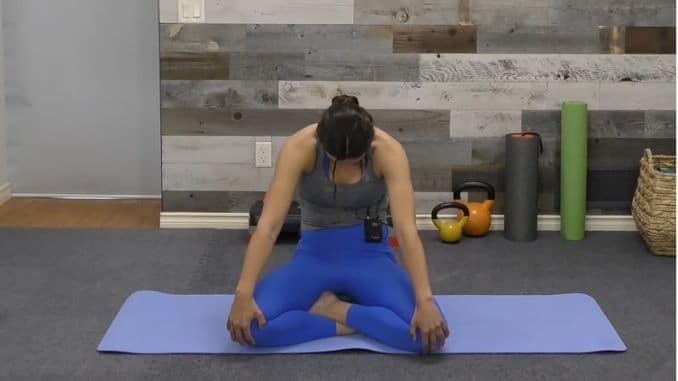 |
3. Side Bends
For this exercise, use a yoga block, bolster, or pillow to support your pelvis in a forward sitting position.
Begin in an upright sitting position on the pillow with your legs crossed in front of your body, maintaining good alignment with your head, shoulders, and hips. Inhale and extend one arm overhead, placing your opposite hand on the floor beside you for support. Engage your core and bend your upper body to the side, reaching over your head with your raised arm. Hold this position for several deep belly breaths, in through your nose and out through your mouth. Slowly return to the starting position and repeat the movement on the opposite side.
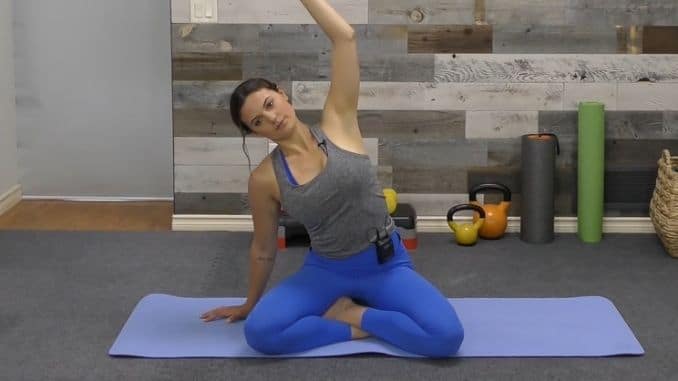
4. Eagle Arms
For this exercise, use a yoga block, bolster, or pillow to support your pelvis in a forward sitting position.
Begin in an upright sitting position on the pillow with your legs crossed in front of your body, maintaining good alignment with your head, shoulders, and hips. Engage your core. Cross your arms in front of your body at shoulder height, wrapping at the elbows and wrists. Hold this position for several deep belly breaths, in through your nose and out through your mouth. Relax and repeat the movement on the opposite side.
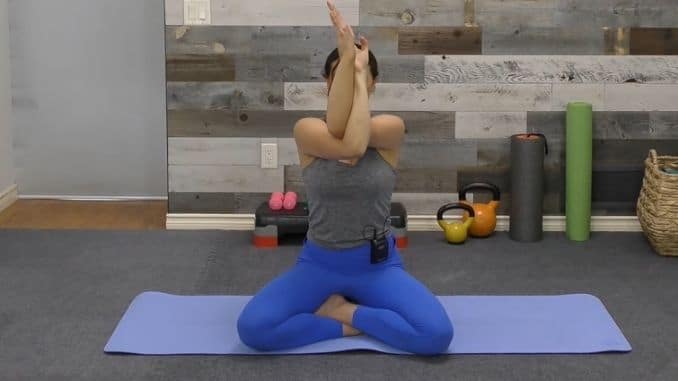
5. Table-Top Cat-Cow
Begin in a 4-point position with your hands below your shoulders and your knees beneath your hips. Contract your abdominal area. Inhale as you slowly lift your head and arch your mid-back. Then, exhale as you alternate by rounding out your mid back as you drop your head downward. Repeat the sequence of movements.
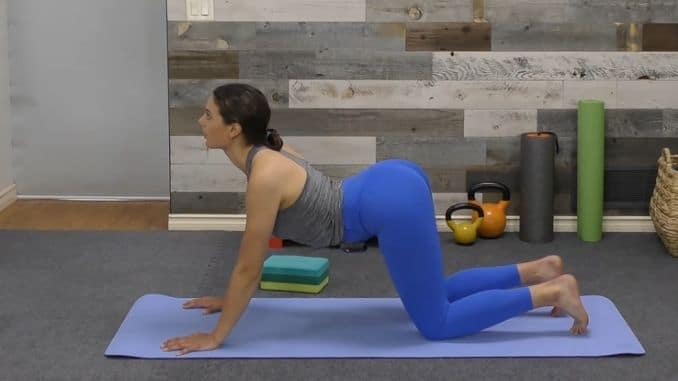 |
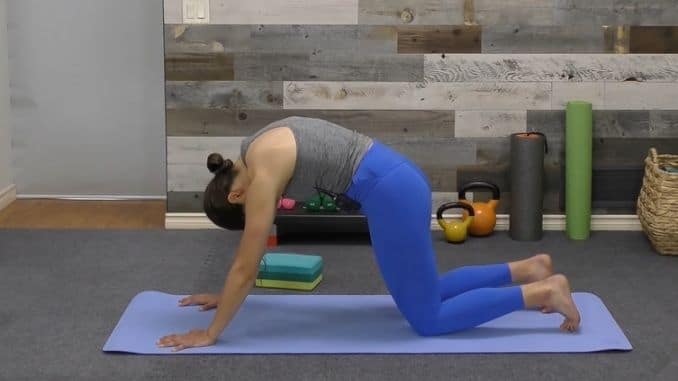 |
6. Bird Dogs
Begin in a 4-point position with your hands beneath your shoulders and your knees under your hips. Contract your abdominal area. Inhale as you lift one arm to be in line with your shoulder and extend your opposite leg behind your body. Keep your hips and shoulders parallel with the floor. Exhale as you return to the center position, bringing your elbow towards your bent knee. Repeat the movement. After several repetitions, repeat the movement on the opposite side.
 |
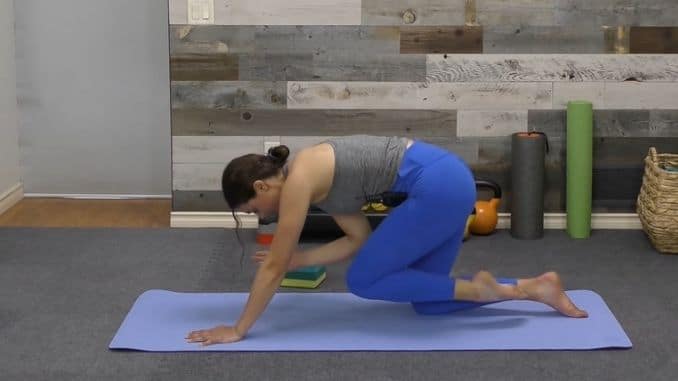 |
7. Table-Top Side Bend
Begin in a 4-point position with your hands beneath your shoulders and your knees under your hips. Contract your abdominal area. Looking for a stretch along the side of your body, straighten one leg and cross it over your opposite calf as you walk your hands to the same side. Hold this position for several deep belly breaths, in through your nose and out through your mouth. Relax and repeat the movement on the opposite side.
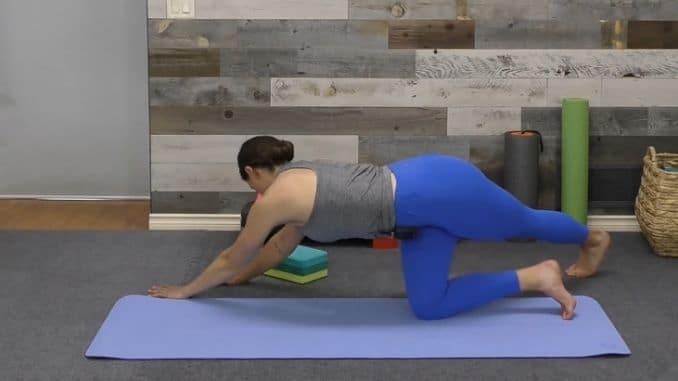
8. Table-Top Chest Opener
Begin in a 4-point position, with your hands beneath your shoulders and your knees under your hips. Contract your abdominal area. Rotate your upper body to one side and place your hand on your pelvis area. Hold this position for several deep belly breaths, in through your nose and out through your mouth. Relax and repeat the movement on the opposite side.
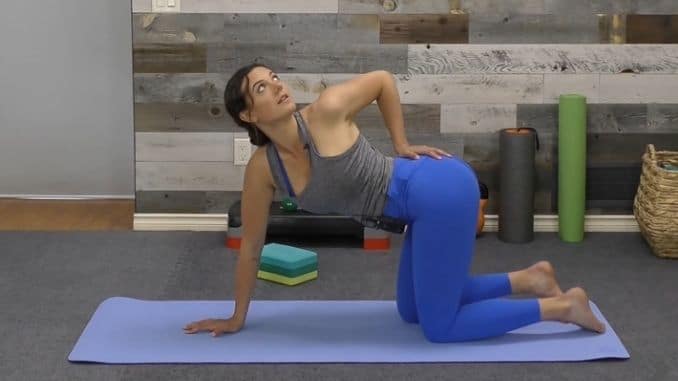
9. Bridge
Lie on your back with your knees bent and your feet flat on the floor, relaxing your upper body. Place your arms at your sides. Contract your abdominal area, then push from your heels to lift your hips. Keep your knees stacked directly over your ankles and hold this position for several deep belly breaths, in through your nose and out through your mouth. Lower your hips to the starting position.
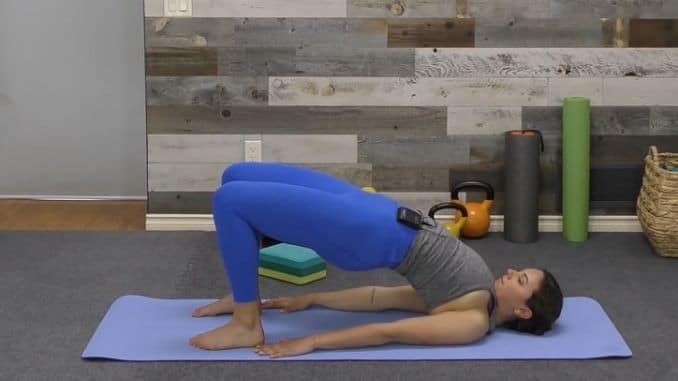
10. Knees to Chest
Lie on your back with your knees bent and your feet flat on the floor. Looking for a light stretch in the lower back and glutes, bring both knees up towards your chest and hold onto your knees with both arms. Take several deep belly breaths, in through your nose and out through your mouth. Relax and return to the starting position.
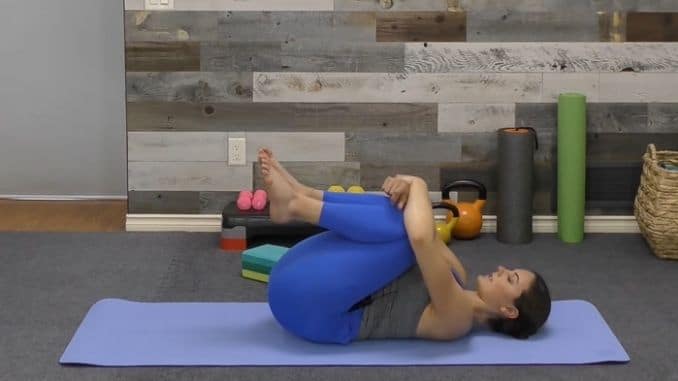
11. Supported Single Knee to Chest
For this exercise, use a yoga block, pillow, or rolled towel to support your lower back.
Lie on your back on the floor, maintaining good alignment with your head, shoulders, hips, and legs. Position the yoga block under your low back area. Tighten your core and bring one knee up towards your chest. Use your hands to pull your knee closer to your body and hold this position for several deep belly breaths, in through your nose and out through your mouth. Relax and repeat the movement on the opposite side.

12. Supported Bridge
For this exercise, use a yoga block, pillow, or bolster to support your lower back.
Lie on your back with your knees bent and feet flat on the floor, around shoulder-width apart. Shift your heels out slightly, letting your knees fall inward. Position the yoga block under your low back area and place your arms at your sides, relaxing your upper body. Hold this position for several deep belly breaths, in through your nose and out through your mouth. Relax and return to the starting position.
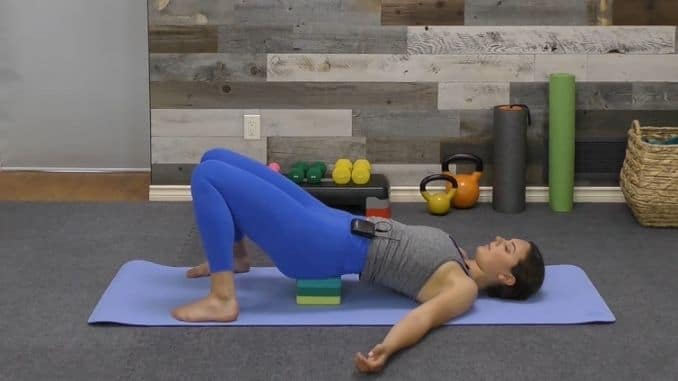
13. Spinal Twist
Lie on your back on the floor with your knees bent and your feet flat. Place your arms at your sides. Straighten one leg, twist through your low back, pelvis, and spine to cross your bent knee over your straight leg and lower it towards the floor. Take several deep belly breaths, in through your nose and out through your mouth. Relax and repeat the movement on the opposite side.
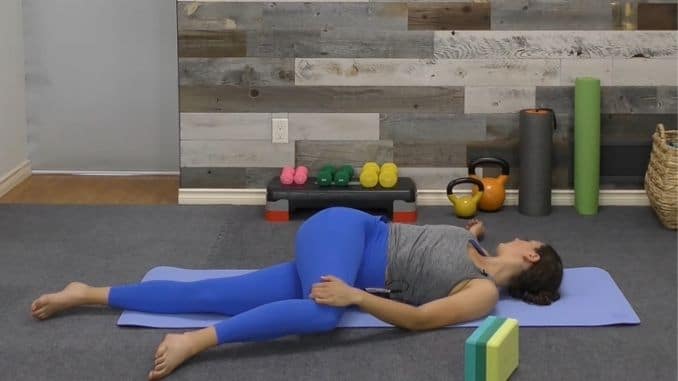
14. Happy Baby
Lie on your back with your knees bent and feet flat on the floor, relaxing your upper body and shoulders. Lift your legs to bring your knees toward your shoulders and hold the outsides of your feet with your hands. Hold this position for several deep belly breaths. Relax and return to the starting position. To intensify the stretch, pull your feet closer to your body.

15. Savasana
Lie on your back on the floor with your arms extended at your sides and your palms facing upward. Relax your entire body. Close your eyes and take several deep belly breaths, in through your nose and out through your mouth.

Repeat Exercise 1 – Breaths
If you are currently experiencing back pain, be cautious with your movements, especially if you have a history of back injuries. The best way to avoid back injuries is to lead a healthy, active lifestyle. Also, try to perform some yoga flow for back pain and stiffness at least 2 days a week. Speak with your doctor regarding any persistent or chronic back pain.
In order to eliminate back pain once and for all, you need to get to the root of the problem. Learn what is really causing your back pain and how to fix it here.

